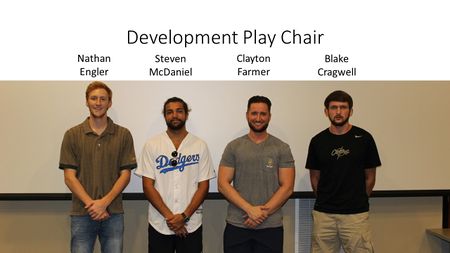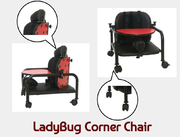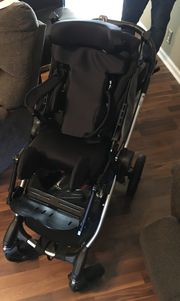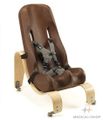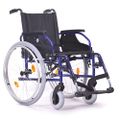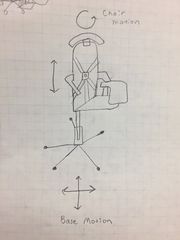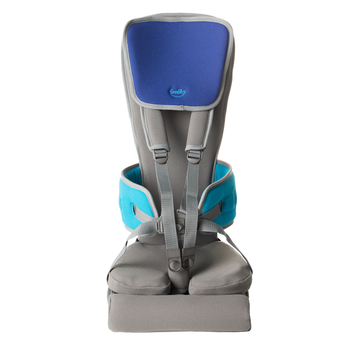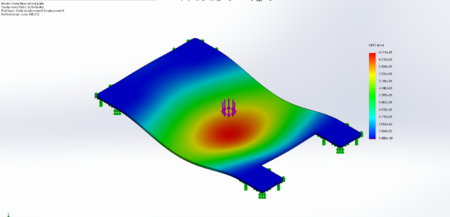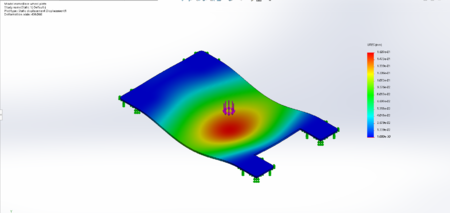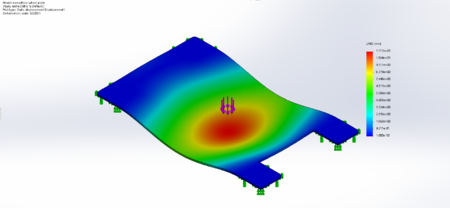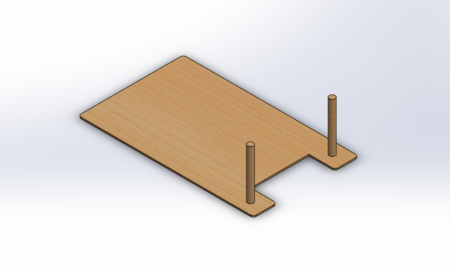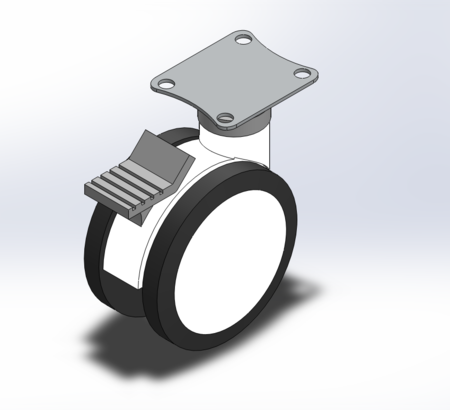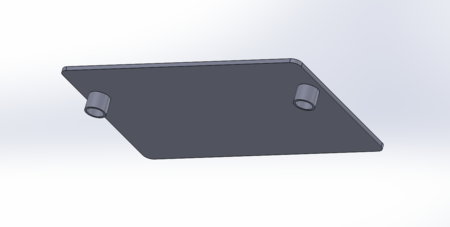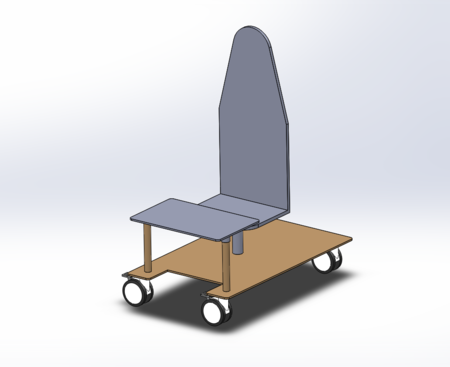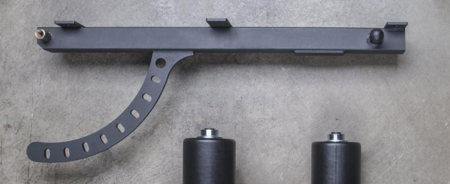Support activity seat
Abstract
Our project is centered around a 2 year old girl with severe scoliosis that has limited mobility of her body. She can not sit up with her back straight unassisted. The family has multiple chairs they use already in different applications, but need one that combines all these benefits. The seat will need to hold her in place while she is sitting up. A tray is needed for sensory development and feeding. We want her to be able to rest her feet on the ground to help with development of mobility in her legs. The chair needs to be lightweight, easy to move from room to room as well as outside to locations other than the home, and adjustable to accommodate the child as she grows in the next year.
Team members
Problem Statement & Overview of the need
A 2 year old girl with scoliosis has extremely limited mobility and can not sit with her back straight unassisted. The child needs a chair with a tray that will support her body as she grows in the next year. The chair needs to be mobile enough to be used in and outside of the house.
Design Specifications
- Knees and ankles need to be at a 90 degree angle
- Side supports to hold torso straight
- Needs to be under 40 pounds
- Breakdown for easy transport
- Needs shoulder straps
- Head support to keep head from falling back
- Needs to be adjustable to continue to support her growth in height (~30"-38") and weight (~23-33 pounds).
Background research
1. There are a lot of supportive chairs for special needs children in the market already. Most of the chairs that offer the postural support we need are heavy and hard to adjust. Using products the family already had and some pictures they had been looking at, we collectively choose features from these that we would need to incorporate in our project. We found the LadyBug Corner Chair met a lot of the mobility requirements for the project. However, the support system in this chair is lacking.
2. The side supports and mobility of the chair are the primary focus of the project. The LadyBug seat would have to be substantially modified with upgraded supports and to be more comfortable to the child.
3. The chairs we saw that had ample postural supports were very bulky and would not be great for in home use. The smaller chairs that are lighter and more mobile did not have the support the child needs. Regardless of what function the chair served best, they were all very costly. On average, anywhere from $500-$1,000. We aim to make the seat more adjustable as well. On the chair the family already has, there are places to adjust the various supports but they require tools. We aim to make the chair easy to adjust by hand.
Conceptual Design
Design Concept 1
In this design, we took a different approach to what is called a "corner chair." We decided to apply a bucket seat because it would be much more supportive to the child's head and torso than a traditional corner chair would be. This design is meant to sit close to the ground so that she might be able to use her feet to move around, but it also offers height adjustability and locking wheels so that her position and mobility can be limited if necessary. Additionally, this chair would offer a detachable tray that she (or her parents) can raise and lower to allow for easier feeding and play time.
Design Concept 2
For this design concept we start with a purchased seat that would accommodate to the child's postural needs. The base frame of the chair would be similar to that of a folding wheelchair. This would keep it light weight and would allow it to be more easily transported to locations outside of the home. All supports would be adjustable. The tray would come across the lap but would be able to store out of the way on the side of the chair.
Design Concept 3
This design is modeled somewhat after a typical office chair. The postural supports would be in the same locations. The difference would be the base and frame of the device. We propose having a base with cylinder that allows the user to adjust the height. This design would be easier to move around the house. The base would also be easily detachable so it could be transported in the family's vehicle.
Evaluate concepts/select candidate
Scale ( 1 - Worst : 3 - Best )
| Design 1 | Design 2 | Design 3 | |
|---|---|---|---|
| Mobility | 3 | 1 | 2 |
| Cost | 3 | 1 | 2 |
| Ease of Use | 2 | 3 | 1 |
| Durability | 2 | 3 | 1 |
| Postural Support | 1 | 2 | 3 |
| TOTAL | 11 | 10 | 9 |
Detailed Design
Description of selected design
We decided to develop concept design 1 into our final project. The design was the best at covering the design parameters set by the family.
Detailed description of selected design
In this design, we took a different approach to what is called a "corner chair." We decided to apply a bucket seat because it would be much more supportive to the child's head and torso than a traditional corner chair would be. This design is meant to sit close to the ground so that she might be able to use her feet to move around, but it also offers height adjustability and locking wheels so that her position and mobility can be limited if necessary. Additionally, this chair would offer a detachable tray that she (or her parents) can raise and lower to allow for easier feeding and play time.
Early stages of our design were based on the LadyBug Corner Chair. This chair had a lot of the features the family wanted, but would not have the postural support this project requires. From there, as a collective, we found the GoTo Postural seat. It is a removable harness that can be attached to any chair, anywhere, and offers the support that is needed. As for the other request, we have decided to build a chair they can use this on, instead of mounting a purchased chair onto a base.
Analysis
Describe three types of analysis to be performed on the design
• Engineering analysis 1
We selected the base plate the wheels are attached to, to perform a stress analysis. We used different materials to see which one would work the best. Using SolidWorks Simulation, we evaluated the displacement that would occur when a 50 pound force was acting downward on the center of the plate.
•Aluminum Alloy
•Plain Carbon Steel
•Plywood
• Engineering analysis 2
We then looked at what material would be easiest to use based on the practicality of application. After seeing the deflection we considered a couple of other factors in deciding what material to make our base part out of. Steel deformed the least, but it is very heavy, which would make the chair more difficult to maneuver. We liked the weight and deformation results of the aluminum alloy, but the metal is expensive. The plywood has a higher chance of breaking, but would be very lightweight. For all these materials we considered how easily it would be to machine them. Plywood was the most lightweight and would be the easiest to work with.
| Material | Mass(lbs) | Price($) | Workability (scale 1-3; best-worst) |
|---|---|---|---|
| Plain Carbon Steel | 38.31 | 52.64 | 3 |
| Aluminum 6061-T6 | 13.26 | 151.59 | 2 |
| Plywood | 0.79 | 27.80 | 1 |
• Engineering analysis 3
CAD Drawings
Insert drawings of all parts and the assembly
Base
Caster
Tray
Full Assembly
Bill of Materials
| Item | Description | Part Number | Price | Quantity | Supplier | Total |
|---|---|---|---|---|---|---|
| Casters | Waxman Locking Casters | 235589 | $7.47 | 4 | Lowes | $29.88 |
| Wood Base/Back/Seat | Plywood 2x4ft | 6209 | $27.80 | 3 | Lowes | $83.40 |
| Postural Support Seat | Support/Cushion | $378.64 | 1 | Fire Fly by Leckey | $378.64 | |
| Lift cylinder | Lifts or lowers seat to desired height | $24.99 | 1 | Amazon.com | $24.99 | |
| Neck support/Head rest | Holds the child's head in place | $54.99 | 1 | $54.99 |
Total(approximation) = $571.90
Assembly Instructions
Fabrication Process
Testing and implementation
Describe testing, delivery, how used/received by the family
Photos of Completed design
Insert pictures of the final product
Instructions for safe use
Provide a clear summary of safe use for the family. Do not use the device unless supervised by an adult that has been fully understood the safe use of this product.
Project Summary, Reflection
Provide reflection on project outcomes here
